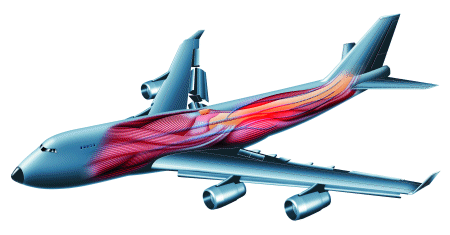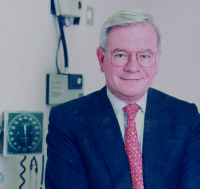Medical questions surrounding deep-vein thrombosis may remain, but the commercial threat it poses for airlines is all too real
DeeDee Doke/LONDON

Nearly 10 years ago, London consultant vascular surgeon John Scurr pondered the significance of an unusual phenomenon. Over the course of a single week, he had seen three patients who had two things in common: each had a blood clot in a leg, and each had just completed a trip by air. "It seemed a bit of a coincidence," he says.
After looking into the subject a little further, he decided that a possible link between air travel and the blood clots in the leg, known as deep-vein thrombosis (DVT), deserved investigation. It took Scurr until 1998 to get a study, complete with necessary funding, off the ground.
The full results of that study, which recruited and screened travellers spending more than8h in the air, will soon be released. And Scurr, a pilot himself, is now one of a select number of medical specialists whose interest in DVT has suddenly turned them into valuable commodities as a series of incidents, including at least one highly publicised death, has thrust DVT into an arena of screaming tabloid headlines, hysteria, lawsuits and latent mythology.
The way ahead
As a result, bodies ranging from ad hoc groups of interested specialists to the World Health Organisation are holding conferences to discuss the way forward in researching DVT. Airlines have begun to take the role of passenger health advisors and well-being advocates, as protection against insurance claims, lawsuits from DVT sufferers or their relatives, and bad public relations, which can quickly translate into poor passenger traffic.
And doctors, haematology specialists and other medical researchers are preparing proposals and protocols in search of funding from diverse sources to resolve once and for all issues such as the effects of cabin environment on passengers, the formation of blood clots and what the best preventive measures might be.

"The difficulty that we all have is deciding between what is true scientific data, and what is anecdotal experience," says Scurr, who met with fellow doctors and other interested parties in Frankfurt in late January to begin defining protocols for a global research effort. "I'm afraid you see one or two cases and are inclined to think: 'This must be a very common problem.' But what you don't know is how many cases you're seeing in relation to the real number of people flying. That is the sort of information we need."
In the meantime, Stefano Sala, associate partner of London-based financial analysts Roland Berger, predicts that the ultimate fall-out from the headlines will be major changes in how the airlines - particularly charter carriers - present themselves to a wary public. For instance, Sala says, charter carrier "Britannia's 28-inch seat pitch will have to go" despite a lack of medical evidence that cramped seats themselves cause DVT.
"The airlines can make all the room in coach (economy class) you want, but I don't think that alone is the answer," says Dr Joe Caprini, an American specialist in surgical haematology and blood clots based at Northwestern University near Chicago.
"That doesn't matter," Sala explains. "It's entirely a question of perception. Airlines must demonstrate to the public that they are pro-actively addressing the topic and not trying to defuse it, as if to say, 'We're doing our homework and we're doing something about it,'" he says.
With the package holiday season approaching, Sala believes the onus is on charter carriers in particular to deliver their individual solutions soon to the air travelling public. "How long will it take? They will need to address it by summer. It's something that needs to be done this year," Sala says.
The view is different across the Atlantic Ocean. "I don't think it's going to have a huge impact," says US aviation analyst Michael Linenberg of Merrill Lynch, New York. "Airlines may lose some flyers, but that's it."
Competition among US carriers is high for long-haul traffic, he points out, especially for "the most lucrative passengers" who take advantage of aircraft with longer ranges to get where they want to go as quickly as possible.
If, for instance, an airline ultimately broke up a long-haul route into multiple legs, Linenberg suggests, its non-stop rivals would gain the competitive edge.
Back in London, Sala acknowledges that DVT's headline power has made its impact "mostly felt in the UK market. Wherever British citizens are flying long haul, it is an issue."
Insurance
In early February, UK travel insurer Club Direct jumped into the DVT fray to offer a new insurance policy provision. In the event of DVT-caused death or injury, the policy will pay legal costs of up to £25,000 for passengers or their relatives to sue airlines. There is a caveat, however: it is aimed only at carriers which do not provide advice on reducing the risk of developing DVT on its flights.
The aviation insurance industry overall is taking a 'wait and see' approach to DVT. "Our position at the moment is that this is a situation that has arisen. It is an extremely sensitive subject," says Graham Nichols, chairman of the Aviation Insurance Office Association, a London market aviation trade organisation. Nichols is also chief executive of Westminster Aviation Insurance Group in London.
"The insurance industry is not doing anything other than saying to our clients, 'Talk to us about these problems, and let us know what you're doing,'" Nichols says. "Our role is to react to what they're doing, not tell them what to do."
The insurance industry has not developed any benchmarks to gauge client performance in responding to DVT issues, believing it is still too early to make such assessments. And, Nichols adds, he does not know when the time will be ripe "because we haven't finished listening".
Positive steps
Possible options to reduce airline liability in cases of DVT offer predominantly unattractive choices to travellers and, therefore, lack widespread commercial appeal. "You could say anyone over 50 can't fly - but commercially, I doubt that would go over very well," Nichols says. Briefing passengers on the DVT threat before they get on an aircraft would mean "we'll have three-hour check-in times, and the travelling public won't put up with it," he notes.
"It's important that they respond positively," Nichols says of the airlines. "I think they're trying to do that - but without putting a negative spin on flying."
Airlines attempting to cast themselves as good guys in the ongoing drama over air travel health and well-being include Malaysia Airlines, which has stepped up soft-drink service on flights longer than 3h; UK-based charter carrier Air 2000, which is adding an air-to-ground medical-call service staffed by National Health Service personnel; and Finnair, which is just one of the airlines providing in-flight exercise videos.
Emirates Airlines confirms that it is in early discussions as to whether it "can take a leading role" in practical, "not frothy" research. In theory, its role could involve either financial support or in-kind assistance, possibly involving empty or newly delivered aircraft as test beds, the airline says: "We don't want to make a shallow gesture, but we would want to do something of global significance."
Ultimately, however, Emirates believes that "overriding responsibility" for scrutinising the problem lies with government: "They should be seen to be collaborating on this," Emirates says.
Opinion is divided as to whether governments should be involved in funding DVT research, with Scurr among the proponents for state funding, but with the UK's Lord Jenkin of Roding, who served on a House of Lords sub-committee on air travel and health, proposing that airlines "and not the taxpayer" fund the studies .
Even researchers are divided over the best possible role for airlines in future studies. Direct funding from the airlines calls a study's credibility into question, Leiden University haematology specialist Frits Rosendaal says: "While studies need industry's logistical support, they should not be partners in the research and should only indirectly fund it - for instance, by donating money to the World Health Organisation, which would then dole out the money in some way of open competition."
Practical steps
Caprini suggests that the airlines could supply in-kind donations such as facilities to conduct the research or air miles to study participants. Also, he adds, companies that would potentially benefit from study results, such as elastic stocking makers, could be called on to give assistance.
An even more crucial issue, however, is who bears the ultimate responsibility for whether or not a person suffers a deep-vein thrombosis as a result of travel.
Scurr is clear that, in his view, passengers have the greatest responsibility for their own well-being, though he believes "the medical profession as a whole is probably in a position to do more than they currently do. They're not particularly well educated with regard to travel." General practitioners must be alerted to and aware of the potential risks their patients may face in long-haul travel.
"The problem is, anybody can get on an aeroplane," Scurr points out. "There has been no real attempt to try and assess who is fit to fly as a passenger and who indeed is responsible for that."
"Probably the most interesting aspect of this," he adds, "is that "the airlines are regulated, the pilots are regulated, but the passengers are not. Maybe they should be."
Source: Flight International
















